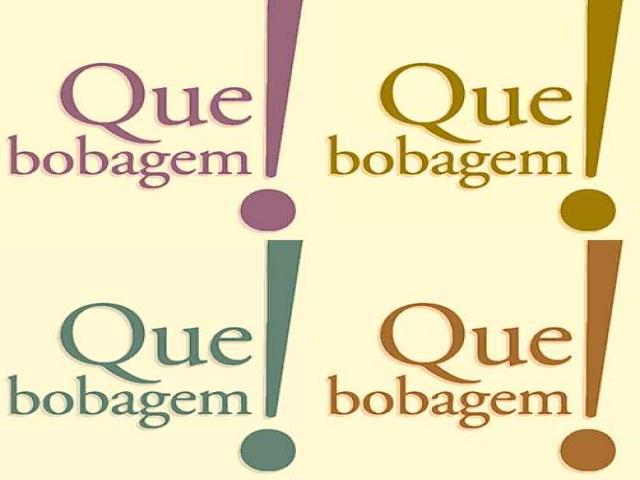Over the past week, the paper and digital editions of the third book I’ve co-authored with Natalia Pasternak since our lives met five years ago have come together—this time after “Ciência in Daily Life” and “Against Reality,” the title being “Que Pojim!”. In it, we are dealing with dozens of systems/doctrines/beliefs that share the characteristic of making false claims about how the universe is, or at least the angle from which Homo sapiens Occupy it, it works.
Some are classic pseudoscience. Others are mystical or artistic. Others bounce back and forth: they are mysticism or art when they receive criticism from science, they are scientific when it comes time to sell themselves to clients. But they all present pictures of physical and biological reality that contradict the realities of the world, as proven by the best available science, and misleading pictures that, if taken seriously, can cause serious financial, emotional, and health damage. They are maps that make the traveler go in circles, or, even worse, take him in the opposite direction to the desired one.
Examples of fantasies referenced and illustrated in the book include the enhancing effect of the infinitesimal dilutions of homeopathy, the psychodynamic unconscious of psychoanalysis, the vital energy of Reiki, the vestigial remains of astronaut deities, and the astrological influence on human personality. . It makes no sense to repeat, in this space, the facts and arguments which allow us to say that all these things are fictional – if it were possible, we would not have had to write nearly 400 pages – but it might be worth discussing the few choices involved in the project.
“controversial”
Of course, we know that this is a “controversial” book, and in at least four senses.
In the first, the most obvious, much of what is said there runs counter to an iota of common sense and even some academic and intellectual consensus. And since I used the phrase “against the tide,” here’s another cliché: It’s a book that takes the reader out of their comfort zone. We do this not out of spite, or in a fit of anger, or to shock the bourgeoisie, but because it is necessary. Persons who navigate their interactions with the world from shoddy maps and an ill-adjusted compass deserve some warning, even if the maps and compass are of the sort usually protected from sharper criticism by that mixture of social expediency and intellectual laziness that sometimes passes for good character.
In the second, derived from the first, we expose, on a very clear platform, serious cracks and fissures in the theoretical and practical foundations of the systems that are a source of income or social status (or both) for so many people. Paraphrasing from our second book, Against Reality, it is hard to convince someone of a truth when their livelihood depends, crucially, on the ignored truth. About that, the best that can be said is that we didn’t make anything up — all the factual claims made in “What rubbish!” They are based on high quality scientific work and are referenced. The opinions and conclusions offered, in turn, come from these facts. Also, it’s at least fair that the public has access to a critical appraisal of the therapies and regimens discussed in the book, which offers an alternative vision to the bombardment of far-fetched promises and shattered self-praise employed by promoters and advocates. And the sellers of these ideas saturate the environment of the media and social networks. “What is this bullshit!” It’s a drop of sobriety in a veritable ocean of heady marketing.
A third point of potential controversy is the supposed “aggressive tone” of the title: What do you mean, “Bobagem”? Who do you hope to convince by calling people’s cherished beliefs “nonsense”? The title has a story related to Natalia’s personal experience, which we tell in the book, which gives the selection a soft and even slightly funny touch – but of course, you have to read the work to know the details.
In addition to the biographical background, the option “Que Boagem!” It comes in part from one of our sources of inspiration, the Spanish Bookshop ¡Vaya Timo! And partly out of a desire to make a cultural impact and bring the broader issue of pseudoscience into public discussion: a book called “Pseudoscientific Current Beliefs or Empirically Unjustified Current Beliefs” probably won’t get as much attention.
general
Returning to the question of “who is it targeted” and “who is its audience”, the first answer is culture in general; We want to disrupt the prevailing epistemological “willing dissidence” and bring some of the issues that have been ignored, or dealt with only among enthusiasts and specialists, to a broader arena. The second is based on understanding audience composition. With regard to any pseudoscience, we can divide the population, more or less roughly, into the following groups: entrepreneurial, fanatical, persuasive, uninformed, curious, skeptical and indifferent.
Entrepreneurs have a serious investment in pseudoscience—both its creators and the people who make it the center of their business models and lives. They can be charlatans (they know they’re selling bullshit) or sincere. Fanatics are always loyal, they are the “number one fans” and messengers of entrepreneurs, and they have a serious emotional investment in faith. Convicts strongly believe in pseudoscience, but their emotional investment is significantly less than that of fanatics.
The uninformed are people who don’t have a serious investment (financial or emotional) in the topic, but believe in pseudoscience simply because they’ve never heard a good counterargument, or because they see the topic being treated positively in the media all the time, and well, if something is wrong At that, someone would have warned me by now, right?
Curious people have heard about it and would like to know more. Skeptics know bullshit is bullshit, but they worry about its effects on the individual and society. And Apathy either doesn’t care or doesn’t even know that the pseudoscience in question exists.
In this demographic measurement, our goal is to warn the apathetic, encourage the skeptical, quell the curious, inform the uninformed, and provide the persuader with abundant material for thought. We are not likely to get an honest and fair hearing among the zealots and businessmen, but perhaps, just maybe, we will sow the seed of suspicion among some of them.
I’ll upload misogyny
The fourth way the book is likely to prove “controversial” is as fuel for crude trolling attempts, on apps and on social media, by the most arrogant and inappropriate entrepreneurs and fanatics. If history is any guide, the mud tsunami had a specific target — Natalia Pasternak.
She is, of course, the most famous, recognizable, popular (and attractive) character of the author duo: we have book signings where the reader picked up her signature, looked at me, the short-sighted fat man at the next table, and asked “But who is this man?”
Given the difference in vision, it’s somewhat understandable that most of the criticism (as well as the praise) goes her way. But asymmetry is much more than quantitative. The low level of criticism of Pasternak, from the outrageous puns of his name to outlandish lies about life and profession, that if they don’t constitute crimes of libel and slander, come very close—you can almost see the hate oozing from the corners of the tweet—is unfortunate. For me, when they remember attacking me, these are flaccid jokes and pathetic attempts at disqualification.
Again, part of this is probably explained by the high profile public persona she maintains, but it’s hard not to reveal a misogynistic weary as well. Of the four ‘controversies’, this is the least productive and the most irrelevant – except perhaps as a subject for socio-psychopathological and cultural data.
inspiration
“What is this bullshit!” He was not born in a vacuum. In addition to the Spanish books in the series ¡Vaya Timo!The obvious antecedents are Martin Gardner’s collections of skeptical essays, especially his groundbreaking book Heresies and Fallacies in the Name of Science, from 1957. The most complete, combining texts written between the 1930s and 1990s, The Night is Large, from 1997. Gardner passed away in 2010.
If we want to extend Pedigreewe can come to what is sometimes considered the first popular science book of modern times, Sir Thomas Browne’s “Pseudodoxia Epidemica”, published in 1646, had the subtitle “Investigations of Generally Presumed Facts”.
“The first, the father of all causes of common errors,” Brown wrote, “is the common disease of human nature, which needs no proof of its elusive state but the errors we make.” Science was born precisely from the realization that human fallibility is a universal condition—that no genius, leader, messiah, or priest is immune. That, finally, we are all subject to nonsense.
Carlos Orci is a journalist and editor-in-chief of Revista Questão de Ciência, author of “O Livro dos Milagres” (Editora da Unesp), “O Livro da Astrologia” (KDP), and “Negacionismo” (Editora de Cultura) and co-author of “Pure Picaretagem” (Leya ), “Science in Daily Life” (Editora Contexto), the work that won the Jabuti Prize, and “Against Reality” (Papirus 7 Mares)

“Hardcore beer fanatic. Falls down a lot. Professional coffee fan. Music ninja.”







More Stories
Students can apply for a FAPDF Science Award
Discovering the deepest sea hole in the world in Mexico | The world and science
The Udesc Postgraduate Course in Human Movement Sciences is accepting applications